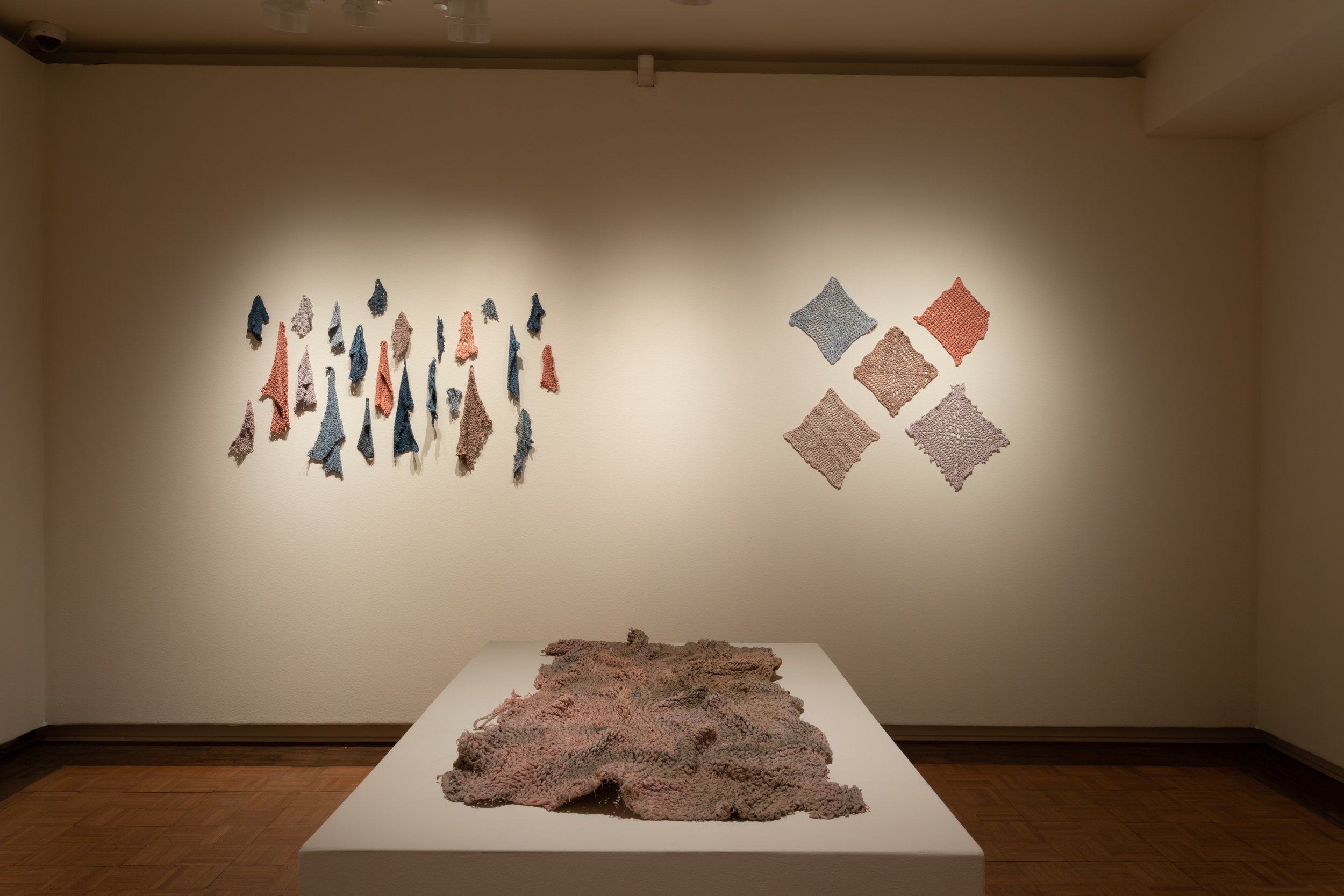Dickinson College Senior Thesis
In May 2022, I completed my undergraduate degree, culminating in a final exhibition of my work. Every piece of work I showed in my show was made from of porcelain. For more information about these works, or to read my artist statement from my thesis, read to the bottom of the page.











Artist Statement (created Spring 2022, written by Rebecca Fox)
My grandmother has knit all her life. I grew up with blankets and hats handmade by her, and she often talked about how her mother taught her to knit when she was just six years old. I learned to sew, weave, knit, and crochet from my grandmother. My impulse to make art is often informed by the skills, meditative space, and objects made through knitting. When I begin each sculpture, I am calling on my personal connections to the material to inspire and produce the framework for each piece. There is a tense emotional connection to this legacy. On the one hand, each object I make reminds me of familial love and support, but each piece has a gravity to it as well, a weight that is felt every time a traditionally “women’s” craft is seen as less than fine art. My studio practice aims to explore the connections between my family history, craft traditions, and the “memories” inherent to my materials or final objects —both before they get turned into ceramics and afterward as individual sculptures.
The process of turning a soft square of fabric into ceramic began as an experiment, but I remain fascinated with the idea of simultaneously memorializing a piece by turning it into ceramic or bronze and destroying it at the same time. When I encase a piece of fabric in slip, the clay soaks into the fibers and takes the shape of the object. Once I put it in the kiln, the fabric itself burns away, leaving an incredibly fragile shell of the woven object. Each object goes through multiple firings to build strength so that the objects can be handled, but fragility is inherent in the process and the final forms. The result will either be a ceramic sculpture or a pile of dust on the kiln floor, impossible to put back together. Even when these ceramic sculptures emerge from the kiln, the fragility of each piece makes the handling and the installation of the work an exceptionally risky and meticulous task. Bronze casting, on the other hand, forms an incredibly durable piece that imitates the pattern of knit without ever pretending to be anything but metal. The pieces that look like scraps of fabric when transformed into ceramics look closer to chain mail in bronze.
In my practice I think about where function and art correspond, where the “Art” resides in an intentionally functional object. A baby blanket, for example, is a functional object because it can provide comfort, but is such a common object seen as art? Through my process of combining ceramics and knitted cloth, I engage with both mediums as nonfunctional. The ceramics are too fragile and thin to serve a utilitarian function, and the knit is no longer soft or flexible. Both the ceramic and cast-metal objects I craft evoke a feeling of comfort and familiarity, yet using various nontraditional glazes and display strategies, they can also surprise the viewer—at times inviting conflicted feelings. I want to bring my memories to the forefront of my art while providing the space for others to attach their own memories to these knit pieces.
